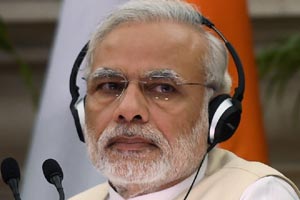Prime Minister Narendra Modi will hold a brainstorming session on Tuesday with industry captains, economists and bankers on steps needed to strengthen the Indian economy by converting the present global uncertainties into an opportunity for the country, sources said.
Besides presidents of industry chambers such as FICCI, CII, Assocham and FIEO, leading industrialists might attend the meeting to be held at 7 Race Course Road at 10.30 am, sources said.
In the meeting, finance minister Arun Jaitley and chief economic advisor Arvind Subramanian are expected to give their views on the current economic situation in the aftermath of frequent external issues like the Greece debt crisis and more recently, the Chinese stock market crash and devaluation of the yuan. Around 30 people have been invited for giving their suggestions to Modi, sources said. Before that, the CEA is likely to make a presentation on the current economic environment.
External developments and some domestic constraints have roiled the Indian equities market and plunged the rupee to a fresh two year low of 66.85 on Monday. The benchmark S&P BSE Sensex fell 1.22% to close at 24,893.81 — its lowest closing in 15 months — on reports of a deficit monsoon and rupee falling to a fresh two-year low, while continued selling on China-fuelled worries also weighed.
The decision to hold consultations at the level of prime minister was taken at a review meeting held by Modi on August 24, the day, Indian equities plunged the most since 2009. The Sensex had lost 1,624 points or about 6% that day.
Jaitley had said that Modi was of the opinion that to maintain growth rate at certain level, India should be take positive steps to convert the present situation into an opportunity for India. In the coming weeks, the government may take some measures to boost economic activity even as markets calm down, sources said.
Notwithstanding the lower-than-expected GDP growth of 7% in Q1FY16, the government expects the economy might clock close to 8% growth in FY16, aided by a combination of crude oil price decreases, macro-economic stability, reforms, lower inflation and reduction of interest rates.

